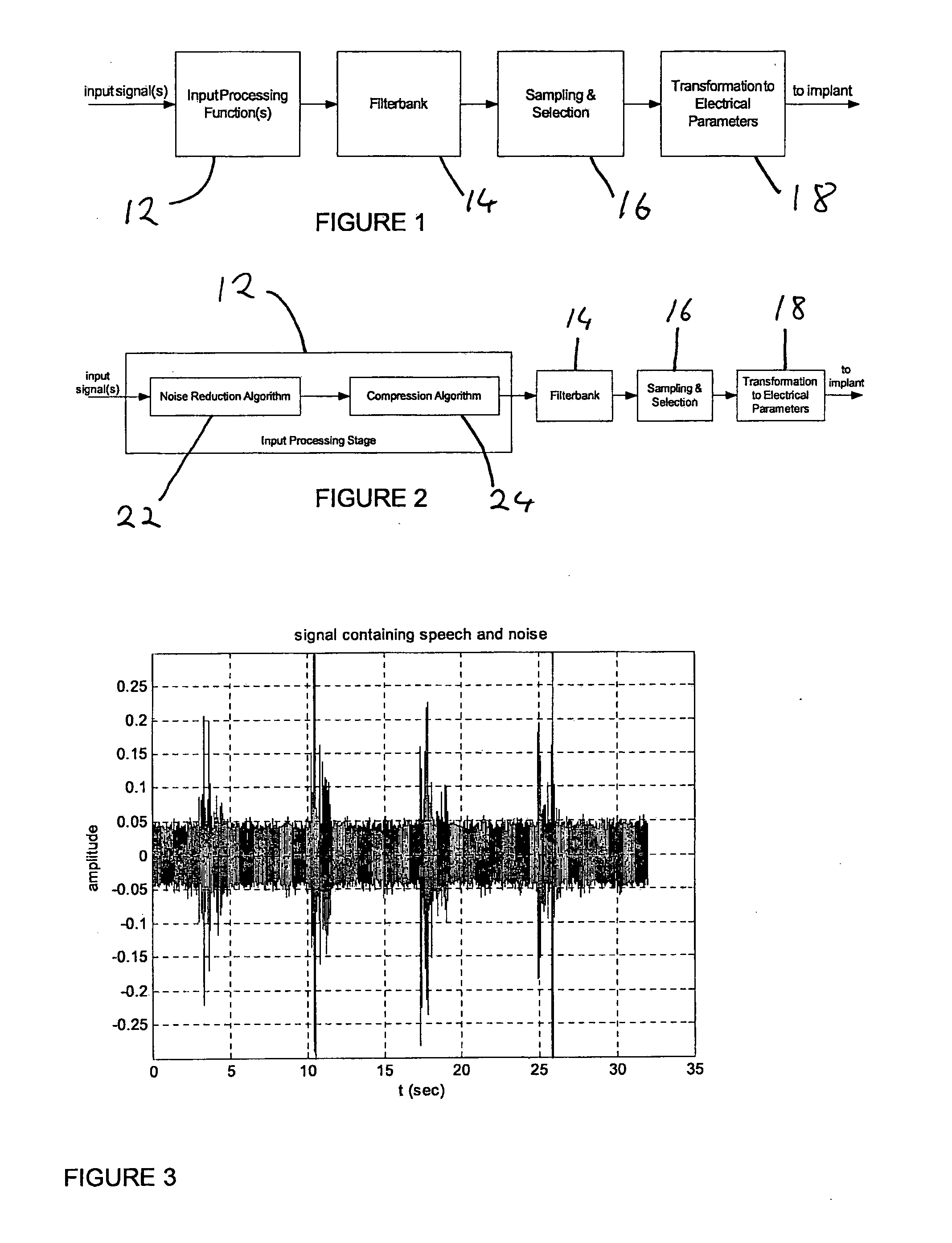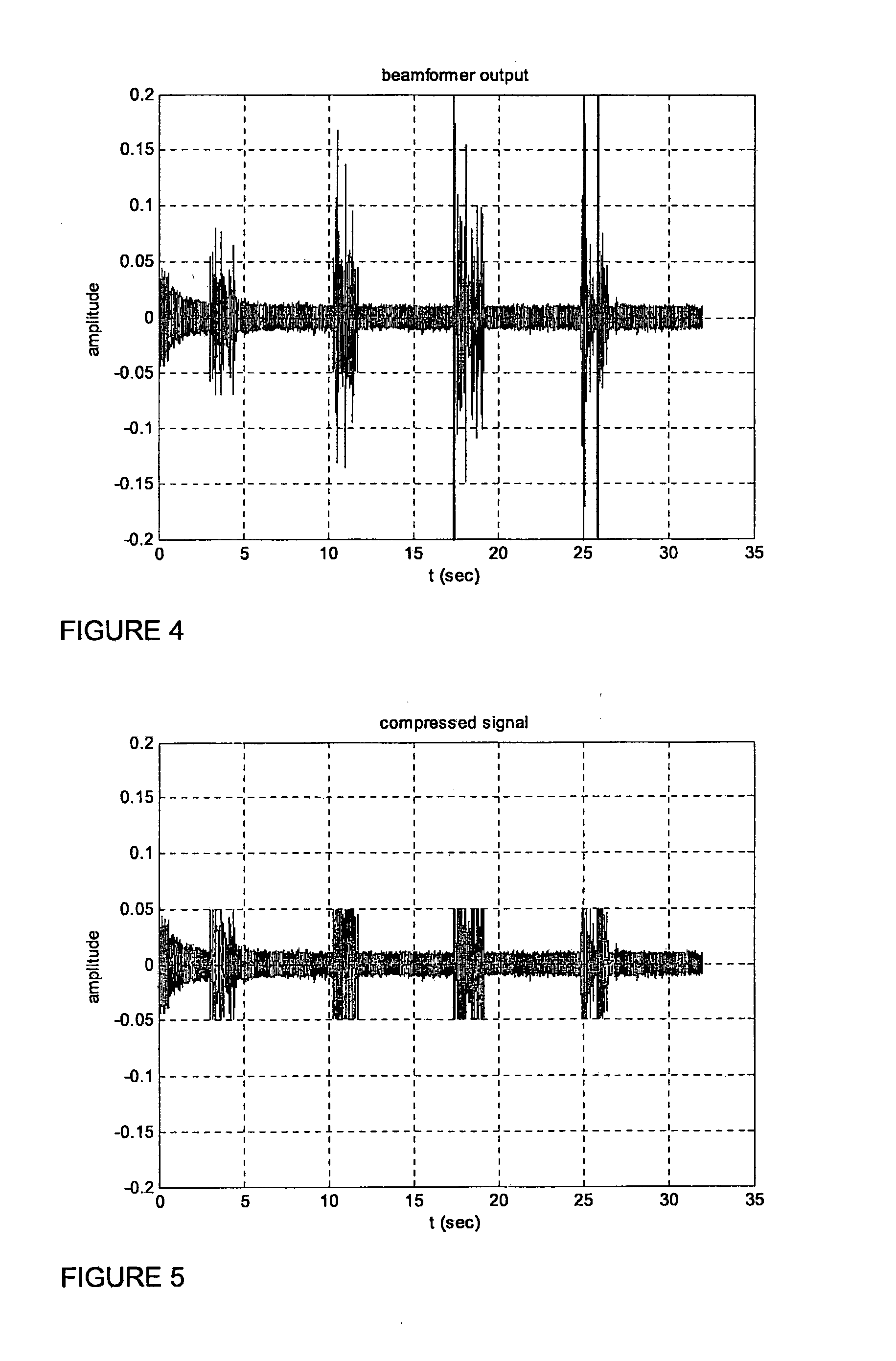Noise reduction in auditory prostheses
- Summary
- Abstract
- Description
- Claims
- Application Information
AI Technical Summary
Benefits of technology
Problems solved by technology
Method used
Image
Examples
Embodiment Construction
[0025]Embodiments of the present invention will be described primarily with respect to an implementation suitable for use with implanted devices, such as intracochlear implants. However, embodiments of the present invention is applicable to other types of hearing prostheses, particularly those employing noise reduction algorithms or processing. Such prostheses include middle ear implants, implanted and non-implanted hearing aids, electro acoustic devices (having electrical and acoustic stimulators), brain stem and other neural stimulators, and other such devices.
[0026]A typical prior art signal path in a cochlear implant (CI) sound processor is shown in FIG. 1. The input sound signals (typically from a microphone) are first subjected to input processing functions 12. These may consist of one or more input processing algorithms, whose function may be for example to reduce noise in the signal, optimize the gain of the signal, perform compression on the signal and so forth. Following i...
PUM
 Login to View More
Login to View More Abstract
Description
Claims
Application Information
 Login to View More
Login to View More - R&D
- Intellectual Property
- Life Sciences
- Materials
- Tech Scout
- Unparalleled Data Quality
- Higher Quality Content
- 60% Fewer Hallucinations
Browse by: Latest US Patents, China's latest patents, Technical Efficacy Thesaurus, Application Domain, Technology Topic, Popular Technical Reports.
© 2025 PatSnap. All rights reserved.Legal|Privacy policy|Modern Slavery Act Transparency Statement|Sitemap|About US| Contact US: help@patsnap.com



